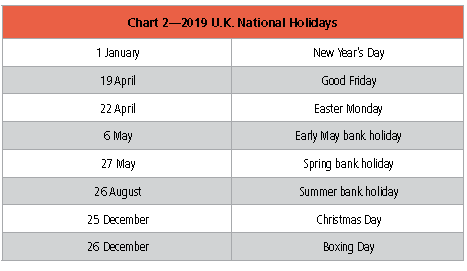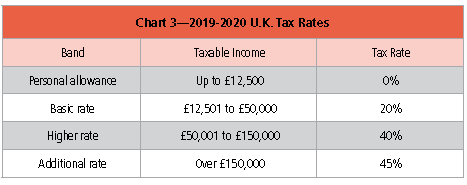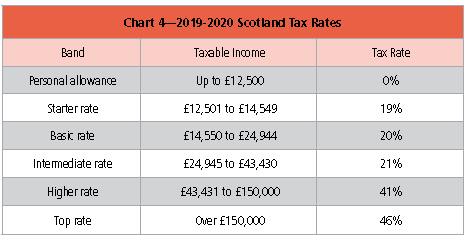
The United Kingdom (U.K.) is undergoing a great deal of change that can reap rewards for investors that position themselves correctly. Located just off the coast of France, the U.K. is a collection of small islands that include the countries of England, Scotland, Wales, and Northern Ireland.
With a population of more than 65 million, the best way to describe the U.K. would be eclectic. The U.K. embraces and celebrates the diverse cultures of the people who settle there, while maintaining a strong vision of national identity.
As open and inclusive as it is conservative and traditional, the U.K. can sometimes feel like a disjointed place. But it has always been a melting pot for ideas and innovation.
The single shared trait of people in the U.K. is that they do not want to cause a fuss. This paints the individual character with an unassuming, polite attitude and self-effacing good humour.
U.K. Employment Law
The main source of U.K. employment law is legislation. Rights agreed at a European level are brought into force through national legislation. Additional rights are included in contracts of employment. The law distinguishes between employees, workers, and the self-employed.
Employees have the most extensive rights under U.K. law. People are considered employees if the employer has control over the work, there is a mutuality of obligation, and there is nothing inconsistent with an employment relationship.
Workers are those who are obligated to perform services personally and do not carry on a business. Self-employed individuals are those who are obligated to perform services but do so as a business. As such, they have few rights under U.K. employment law.
Brexit
The U.K. is going through the process of leaving the European Union (EU), leaving many businesses with questions that need answering. As members of the EU, European Case Law and Directives have significantly influenced many aspects of U.K. employment law, from working time to wages.
Brexit is unlikely to mean a complete departure from all European Directives. But once the U.K. has withdrawn from the EU, businesses may no longer need to interpret Working Time Regulations to comply with EU Directives.
This is by no means certain, of course, and there are still many questions that need answering. In this time of uncertainty, the government has issued guidance on its overarching approach to preparing the U.K. for Brexit in order to minimise disruption and ensure a smooth and orderly exit in all scenarios.
National Living Wage
In addition to a National Minimum Wage, the U.K. now has a National Living Wage for employees age 25 and over. This rate is set to change every April. The wage rate employees are paid depends on their age, as follows in Chart 1.

U.K. Working Hours
According to the U.K.’s working time directive, employees cannot work more than 48 hours a week on average, when measured over a 17-week period. Employees can voluntarily opt out of a 48-hour week should they choose.
A typical U.K. working day is 9:00 a.m.-5:00 p.m., but this can vary depending on the nature of the job. Generally, a typical working day in whatever form is eight hours long.
National Holidays
U.K. national holidays are a combination of religious holidays (Good Friday, Christmas Day) and “bank holidays” (see Chart 2). Bank holidays can also be issued by the government in the event of a large public event, such as a royal wedding.
There is no automatic right to time off on these days, although banks close and the majority of the working population is granted time off work or extra pay for working on these days, depending on their contract.

Employee Contracts
All U.K. employees have contracts of employment. These contracts establish and provide proof of agreement on employment conditions, rights, responsibilities, and duties.
Contracts of employment do not need to be in writing, only agreed to. By accepting a job offer, a contract is established between the employer and the employee.
Any new U.K.-resident employees need to provide a current Form P45 from their previous employer. This form shows the employee’s current pay and tax details, and is similar to a Form W-2 in the United States.
If the employee does not provide a Form P45, they will need to contact Her Majesty’s Revenue and Customs (HMRC), which will determine the correct tax code to use for them.
Employees have a personal allowance by way of a personal tax code so that income up to that amount is free of tax. However, HMRC will advise the employer what tax code to operate, including zero or negative codes.
When a U.K. employee leaves employment, they need to be provided with a Form P45 showing their leaving date and their taxable pay for the year-to-date together with tax paid and their tax code.
Pay As You Earn (PAYE)
Payroll can be run monthly, which is usual in the U.K., or on a weekly basis, if preferred. Part of running the payroll includes collecting U.K. payroll taxes from employees’ salaries.
There are two key payroll taxes that overseas employers need to consider: income tax and National Insurance. These are paid via the Pay As You Earn (PAYE) system.
The PAYE system is a method of paying income tax and National Insurance contributions. Employers deduct tax and National Insurance contributions from employee wages or occupational pensions before paying them.
If you choose to “second” your employees to a U.K.-based firm, PAYE is their responsibility, but they will operate under a different tax rate. Other deductions collected through payroll include student loan repayments and pension contributions. In addition, you will also need to pay National Insurance, which is based on your employees’ salaries.
Rates of National Insurance and income tax change regularly in the U.K. Rate changes are usually announced during the annual budget announcements.
Payroll taxes are payable to HMRC after the 6th but before the 22nd of the month following the payroll date.
Tax Rates
The first £12,500 of income is considered a personal allowance in the U.K. This amount is not taxed. After £12,500, income is taxed at progressively higher amounts, depending on earnings (see Chart 3).
Scotland has different tax bands than the rest of the U.K. Depending on where in the U.K. the employee is located, the tax rate may vary (see Chart 4).


National Insurance
In order to gain entitlement to benefits, such as state pension, jobseeker’s allowance, etc., employees must pay National Insurance. Employees over age 16 who earn more than £166 a week, or are self-employed and making a profit of £6,365 a year, pay National Insurance in the U.K.
Auto Enrolment
The U.K. requires every employer of U.K. employees to offer a workplace pension. The rules around Auto Enrolment mean that there is greater onus on employers to act in compliance with The Pensions Regulator.
Like PAYE, employers have to implement a number of processes to ensure they are complying with the legal requirements and supporting staff effectively.
Statutory Payments
Any statutory payments— statutory sick pay, statutory maternity pay, statutory paternity pay, or statutory adoption pay—are processed through the payroll.
Employers are able to recover payments for statutory pay, but the amount that they can recover depends on the amount of National Insurance paid in a year.
Employers can reclaim the appropriate recoverable amount by reducing their monthly payroll tax payment to HMRC by that amount.
Statutory Sick Pay
Employees eligible for statutory sick pay are entitled to £94.25 a week for up to 28 weeks. Company schemes may offer more but cannot offer less. Statutory annual leave is accrued while the employee is off work sick and can be taken during sick leave.
Statutory Maternity Pay, Paternity Pay
The U.K. offers up to 52 weeks of maternity leave. The first 26 weeks are known as Ordinary Maternity Leave and the last 26 weeks are Additional Maternity Leave. The same is true of adoption leave.
Employees eligible for maternity pay or adoption pay can be paid for up to 39 weeks at 90% of their average weekly earnings before tax for the first six weeks. For the remaining 33 weeks, this is adjusted to £148.68, or 90% of their average weekly earnings, whichever is lower.
Paternity leave is either one or two consecutive weeks. Eligible employees are entitled to £148.68, or 90% of their average weekly earnings, whichever is lower, before tax.
Year-End Reporting
At the end of the U.K. tax year (5 April) you need to make your final report for the year to HMRC and provide each of your employees with a Form P60, which summarises their total pay and deductions for the year.
As part of your year-end reporting, you will also need to advise HMRC about any expenses and benefits.
The HMRC’s online platform does make the submission of payroll reports much faster, but compiling the data for overseas employees is where the challenge lies.
Having an entity in the U.K. to act on your behalf allows you to “second” your staff, passing the responsibility for the payroll processing over to them.
Other businesses find centralizing their global payroll functions to be much more conducive to future expansion in other markets.
In this circumstance, a specialized global payroll provider can give you the insight and support you need to process your global payroll.
Real Time Information (RTI)
Real Time Information (RTI) is the system the U.K. uses to report payroll information. Under RTI, employers have to report their payroll data to HMRC online.
RTI requires payroll data to be sent before, or at the same time, the payment of salaries is made. Once the data has been submitted it cannot be over written or re-done. Errors in RTI can be costly to employers managing their foreign U.K. payrolls.
As part of payroll reporting, employers have to advise HMRC if a new employee joins or if an employee’s circumstances change.
Do you like our content? Join the GPMI community to get free education and articles straight to your inbox!

Gary Webb is Marketing Director for FMP Global. FMP Global is the leading provider of payroll and HR services to international SME organizations, with more than 40 years’ experience. Working in more than 135 countries, FMP Global provides a wide portfolio of complementary services, ranging from outsourced payroll bureau services and international payment facilitation to HR and payroll.